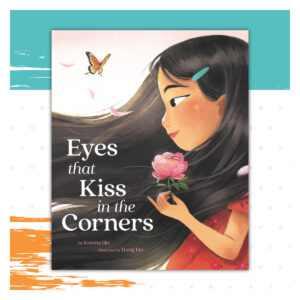Honoring Asian/Pacific American Children’s Literature
Asian/Pacific American Heritage Month is a wonderful opportunity to celebrate the rich histories, diverse cultures, and significant contributions of Asian Americans and Pacific Islanders in the United States. One of the most delightful ways to explore and appreciate this heritage is through picture books. These books not only tell engaging stories but also offer children and adults alike a vibrant visual experience of cultural stories and themes. Our team has highlighted five outstanding picture books and their talented authors, each bringing unique perspectives and rich narratives to the literary world.
 1. “A Different Pond” by Bao Phi, Illustrated by Thi Bui
1. “A Different Pond” by Bao Phi, Illustrated by Thi Bui
This evocative picture book tells the story of a young Vietnamese American boy and his early morning fishing trips with his father. Written by acclaimed poet Bao Phi and beautifully illustrated by Thi Bui, “A Different Pond” is not just a story about a familial bonding activity but a poignant glimpse into the life of a family making their way in a new country. The narrative beautifully captures themes of immigrant struggle, the balance of cultures, and the tender moments of family life.
 2. “Eyes That Kiss in the Corners” by Joanna Ho, Illustrated by Dung Ho
2. “Eyes That Kiss in the Corners” by Joanna Ho, Illustrated by Dung Ho
Joanna Ho’s poetic text combined with Dung Ho’s stunning illustrations brings to life a story about recognizing and celebrating one’s own unique beauty. “Eyes That Kiss in the Corners” follows a young Asian girl who notices that her eyes look different from her peers’. Through lyrical language, the book explores themes of self-acceptance and cultural heritage, as the girl discovers the beauty in her features, which reflect her family’s history and strength.
 3. “Bilal Cooks Daal” by Aisha Saeed, Illustrated by Anoosha Syed
3. “Bilal Cooks Daal” by Aisha Saeed, Illustrated by Anoosha Syed
This charming book by Aisha Saeed, with playful and engaging illustrations by Anoosha Syed, tells the story of a young Pakistani boy named Bilal who is excited to share his favorite traditional dish, daal, with his friends. The story serves as a gentle introduction to culinary traditions and the patience involved in cooking while celebrating diversity and the joy of sharing one’s culture through food.
 4. “Watercress” by Andrea Wang, Illustrated by Jason Chin
4. “Watercress” by Andrea Wang, Illustrated by Jason Chin
Capturing the immigrant experience through a simple family outing, “Watercress” by Andrea Wang, illustrated by Jason Chin, is an emotional tale that encourages young readers to appreciate their heritage. The story revolves around a Chinese American girl who feels embarrassed when her parents stop the car to pick watercress from a ditch. However, through her parents’ stories, she learns about the hardships they faced and grows to appreciate her family’s past and the nutritious food they gather, symbolizing love and survival.
 5. “Where Are You From?” by Yamile Saied Méndez, Illustrated by Jaime Kim
5. “Where Are You From?” by Yamile Saied Méndez, Illustrated by Jaime Kim
This thoughtful book explores a question often posed to children from diverse backgrounds: “Where are you from?” Written by Yamile Saied Méndez and illustrated by Jaime Kim, the story follows a young girl who seeks an answer to this question. With the help of her abuelo, she discovers a deeper understanding of her cultural roots that spans continents and generations, celebrating the beauty of diversity and the complexity of personal identity.
Build Empathy and Understanding
Each of these picture books offers a unique window into the Asian/Pacific American experience, crafted with love, care, and deep respect for cultural narratives. They are not only perfect for family sharing during Asian/Pacific American Heritage Month but also serve as important resources for empathy, understanding, and celebration of diversity all year round. By reading these stories, we take another step towards appreciating the tapestry of stories that enrich our communities and our own lives.
Let’s continue to honor the contributions of Asian/Pacific Americans by bringing Youth Equity Stewardship to your school. Youth Equity Stewardship (YES) is an innovative and experiential learning process that activates and sustains authentic partnerships between adults and students leading to compelling, sustainable, vibrant communities. Facilitators foster multi-generational collaboration through music, movement, and visual arts to address complex educational challenges with an asset-based, solution-oriented process that drives continuous improvement.
Youth Equity Stewardship
